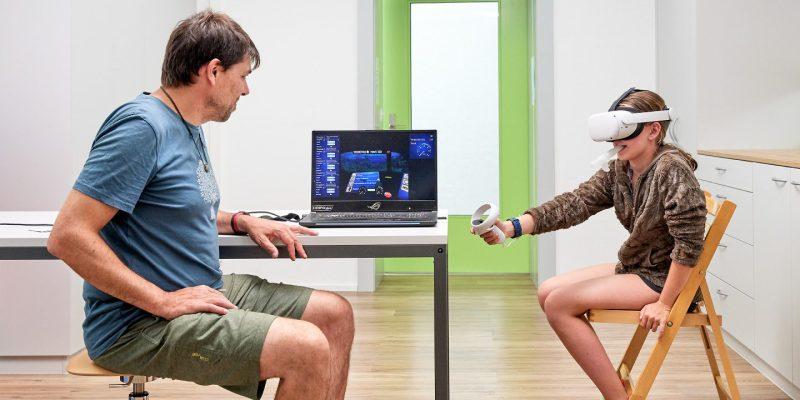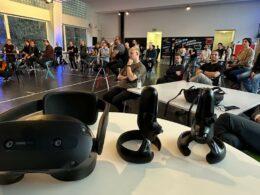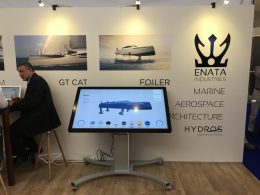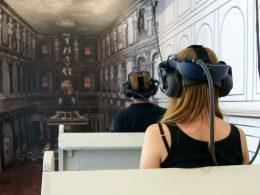Steer a submarine by breathing in and out and dive to the bottom of the sea for a virtual treasure hunt - this virtual reality game makes respiratory therapy easier for children and young people with cystic fibrosis. A research team from the HSLU helped to develop it.
In Switzerland, around 1000 people are affected by cystic fibrosis (CF). This metabolic disease leads to viscous mucus in the lungs and often also to complaints in the digestive tract. Treatment includes daily breathing exercises. These activate the viscous lung secretions so that they can be coughed up.)
However, children and adolescents in particular often lack the motivation to do the exercises properly at home. That is why Schumacher, a specialist in children's therapy, developed the concept of a supporting computer game - a so-called serious game. In collaboration with Tobias Kreienbühl, computer science researcher at the Lucerne University of Applied Sciences and Arts, an exercise game designed as a virtual reality game was created.
An action game would be counterproductive
The principle is simple: the players are in the cockpit of a submarine, where they set the most important parameters for the game. As soon as the game starts, you set off on a dive through the underwater world. Performing the breathing exercises allows the player to progress.
To make this work, the game makes use of the Pari PEP system: This therapy device is used for the exercises to clear the airways. The CF patients blow into it until the mucus in the lungs is loosened. A sensor connected to the device measures the necessary information and sends it wirelessly to the game.
The aim of a dive is to reach a treasure chest on the seabed. At the end, the players receive feedback on their performance. The content and storyline of the game are deliberately kept simple. It will certainly never be an action game," explains developer Tobias Kreienbühl. "If the excitement of the people concerned increases, the quality of breathing decreases. The game should support the exercises, not hinder them."
Dive into the virtual sea
"Thanks to VR glasses, the players are better cut off from external stimuli," says Kreienbühl. The focus on the exercises is stronger and the execution improves.
While the patient dives over the seabed, Thomas Schumacher monitors the movements of their abdomen. If the urge to cough becomes too strong, the patient takes off the VR goggles. Schumacher immediately puts the tissues used for coughing into a plastic bag. "The concentration of pathogens in the secretion is many times higher than in a person without CF," he says. Accordingly, caution is called for when disposing of them and thorough hand washing at the end of the exercise.
Use also conceivable in asthma treatment
Thomas Schumacher is supported in the development by his brother Kurt, who has taken over the management of the project. Both know that it is still in its infancy. They see potential in the measurement and feedback structure programmed by the HSLU researchers especially for the game, which functions separately from the dive scenario. As isolated software, it can be used for other games and applications. "The diving game appeals to children and young people; we would need a different storyline for adults," says Thomas Schumacher.
This becomes especially important when the game is adapted for the treatment of other diseases, as Kurt Schumacher explains: "The game is not specifically designed for CF sufferers. The same breathing exercises are also used for asthma or the chronic obstructive pulmonary disease COPD." For example, something for senior citizens with breathing problems: There, he could well imagine that the measuring mechanism is already a great help in itself without a game. This expands the range of uses for the game from around a thousand to hundreds of thousands of patients in Switzerland alone.
Source: HSLU









